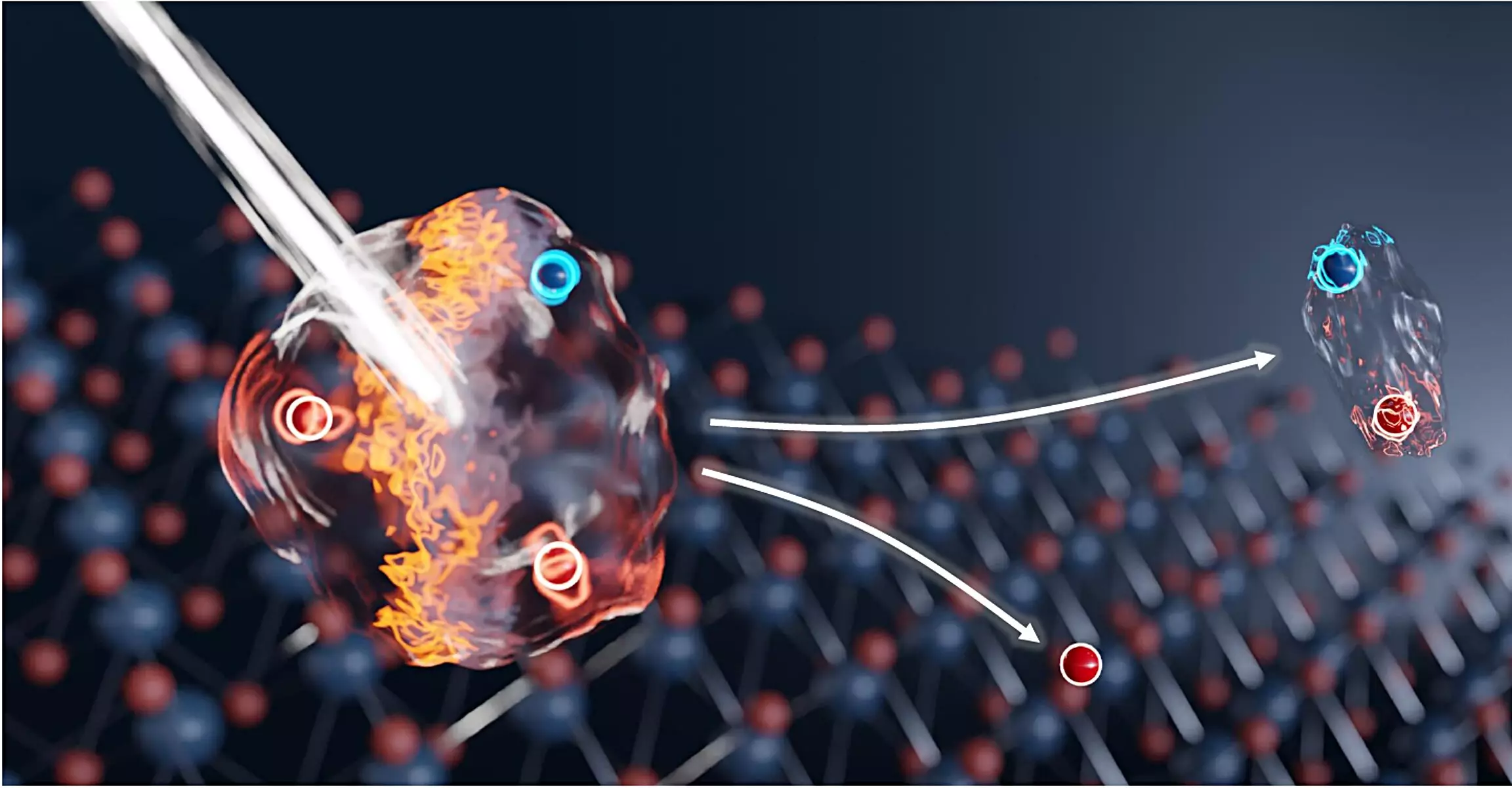The advent of two-dimensional (2D) materials has ushered in a new era in materials science and engineering, providing unprecedented opportunities for the development of advanced electronic and quantum technologies. With a thickness measured in atomic layers, these materials display unique physical properties that differ significantly from their bulk counterparts. The study of their behavior, particularly in regard to excitons and trions, stands at the forefront of research exploring the future of optoelectronics and photonics. A recent experiment led by a team from TU Dresden, in collaboration with various international institutions, sheds new light on the rapid switching capabilities between these states, with promising implications for technology applications.
At the heart of the research lies the behaviour of excitons and trions, two types of quasiparticles formed within semiconductor materials. Excitons arise when an electron is excited to a higher energy state, leaving behind a positively charged hole; these two entities are bound together due to their opposite charges. Trions, on the other hand, are more complex entities that consist of an exciton captured by an additional electron, thus introducing a three-particle configuration. This interaction creates an opportunity for rich physics, as the combination of electric charge and potent light emission provides a dual mechanism for controlling electronic and optical signals.
Moreover, the dynamics between these states are critical for future applications. Previous investigations into switching between excitons and trions have yielded limited speeds, posing challenges for practical utilization. However, under the guidance of Professor Alexey Chernikov, the team successfully accelerated this switching process, which has implications for optical data processing and flexible detectors.
The groundbreaking experiment was conducted at the Helmholtz-Zentrum Dresden-Rossendorf (HZDR) using state-of-the-art facilities, particularly the FELBE free-electron laser. This laser produces intense terahertz pulses – electromagnetic radiation lying between radio waves and infrared light. By applying these high-frequency terahertz waves to an ultra-thin layer of molybdenum diselenide, the researchers were able to manipulate the excitonic states with remarkable precision.
Initially, short laser pulses were directed at the material at cryogenic temperatures, generating excitons. The excitement of these quasiparticles leads them to capture additional electrons floating freely in the material, thereby transitioning into trions. By subsequently applying the terahertz pulses, the bond between the exciton and its accompanying electron was broken, resulting in rapid reconstruction into excitonic states—a transformation occurring within a few picoseconds. This speed marks an advance nearly a thousand times faster than previously recorded purely electronic methods.
The implications of this research extend far beyond theoretical curiosity. With such rapid and controllable switching capabilities, possibilities emerge in developing optical modulators that could pave the way for new sensor technologies. The ability to control excitons and trions within two-dimensional materials opens diverse avenues for future applications, as scientists and engineers work towards creating compact solutions that integrate electronic and optical functionalities.
For instance, the potential for developing terahertz detectors that operate effectively at room temperature represents a significant tangent for technological improvements. Such detectors would not only further the capabilities in terahertz imaging but could also yield systems with adjustable sensitivity across a wide frequency range—akin to high-resolution terahertz cameras with a large number of pixels. Given the nature of terahertz radiation, innovations in this arena could lead to breakthroughs in security screening, medical imaging, and communication technologies.
As the field of two-dimensional materials continues to evolve, this pioneering work lays a strong foundation for future explorations into the intricate dynamics of exciton and trion switching. With the methods demonstrated by this international research team, new opportunities may arise for exploring complex electronic states and enabling efficient optical data processing.
The findings from TU Dresden and its collaborators represent a significant milestone in the pursuit of advanced materials suitable for next-generation electronic applications. By mastering the interplay between excitons and trions through rapid switching, researchers are well on their way to redefining the landscape of electronics and developing technologies that are both flexible and highly efficient. The benefits of such innovations may soon be realized in a broader context, changing the way we interact with electronic devices and digital technology.


Leave a Reply